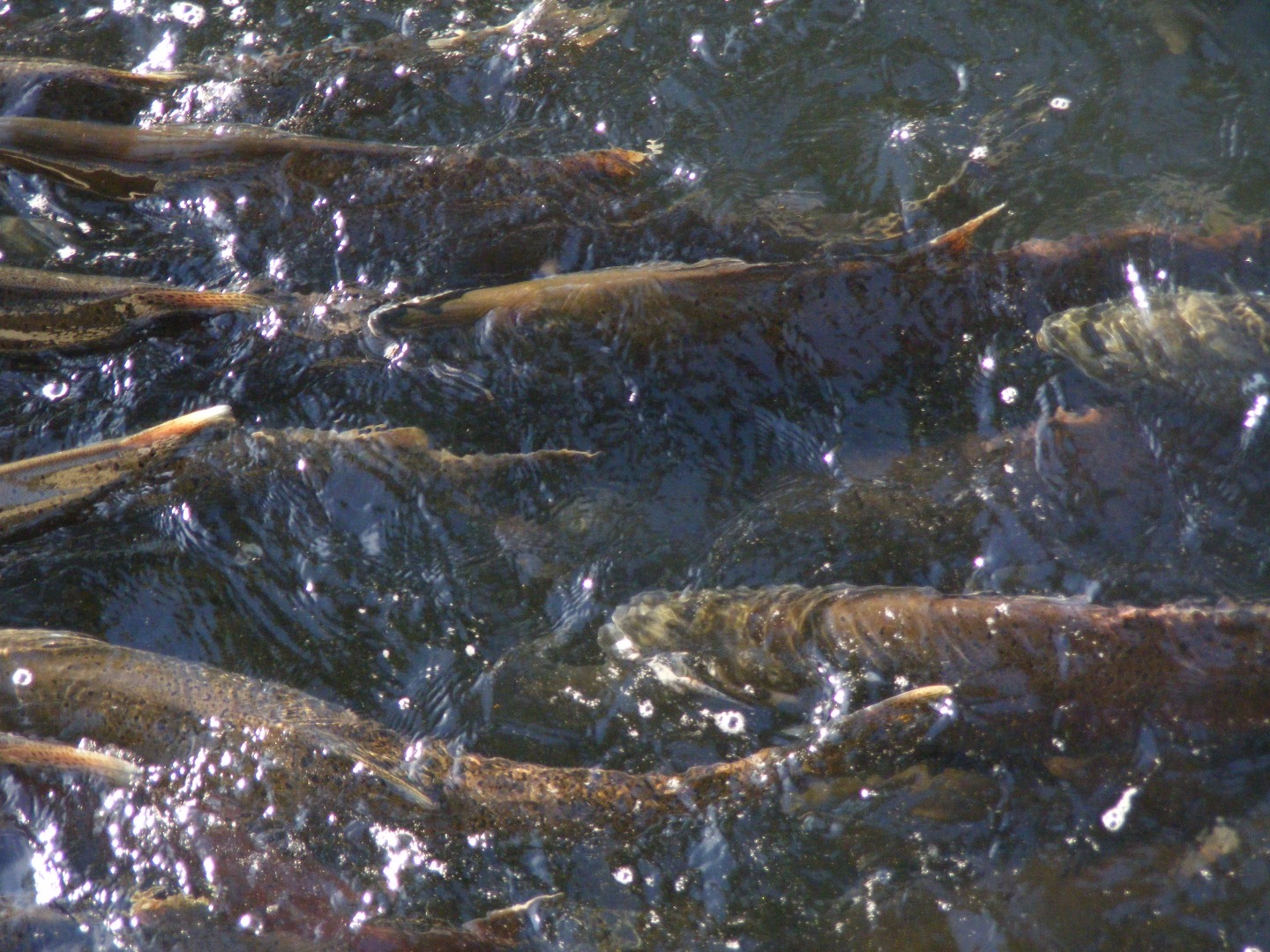From Sportfishing
Fish Report for 6-5-2017

Aggressive strategies to protect iconic species
6-5-2017
California Natural Resources Agency
With the latest science showing that nearly half of California’s native salmon and trout species face extinction in the next 50 years, state agencies have committed to a suite of actions to improve survival rates, including restoring habitat, improving stream flow, removing stream barriers and reintroducing species to ideal habitat. These actions and more are described in a Sacramento Valley Salmon Resiliency Strategy released today and available here.
The science-based document addresses near- and long-term needs of Sacramento River runs of sea-going fish, focusing primarily on endangered winter-run Chinook salmon, threatened Central Valley spring-run Chinook salmon and threatened Central Valley steelhead. In a recent study, the UC Davis Center for Watershed Sciences concluded that if present trends continue, nearly 45 percent of the 32 species of the state’s native salmon and trout could be extinct within 50 years. Habitat loss, water diversions, dams, and the warmer temperatures brought on by climate change pose major threats to these species. Five years of drought from 2012 through 2016 worsened conditions, and Governor Edmund G. Brown Jr. on May 24 asked the federal government to declare a catastrophic regional fishery disaster and commercial fishery failure in the state, as the economic damage of low harvest rates and extensive closures of both the commercial and recreational Chinook salmon fisheries reverberates through coastal towns.
Actions in the resiliency strategy aim to reduce specific risks to salmon and steelhead at different stages of their migratory lives. These fish travel hundreds of miles of Central Valley streams and spend several years in the Pacific Ocean, so the strategy targets the freshwater streams where salmon and steelhead eggs hatch, the streams and floodplains where young fish rear, the Delta channels the fish must travel to reach the ocean, and the many barriers that hinder adult fish returning to spawn in natal streams.
“In its lifetime, a salmon or steelhead moves from a mountain stream to the high seas, and, as if that’s not enough, then returns to the very stream they were born in to spawn and die,” said California Department of Fish and Wildlife Director Charlton H. Bonham. “Threats face them every mile of the journey. So our efforts to make this migration safer must be strategic and comprehensive. The salmon resiliency strategy released today describes immediate, targeted actions we can take to ensure that more fish survive several critical phases of their remarkable life cycle.”
The Strategy focuses special attention on streams that drain to the Sacramento River from Mount Lassen, Mount Shasta, and nearby volcanic peaks. Fed by snowmelt and springs, these streams stay cooler longer than most and offer refuge to winter-run Chinook salmon that evolved to use the spring-fed McCIoud and Pit rivers north of Redding. There, icy waters kept eggs and young fish alive through summer. Today winter-run are forced to spawn 30 miles south, below Shasta Dam. In drought years their eggs and newly hatched fish have not survived due to limited cold water reserves behind the dam.
Under the strategy, the State will, among other actions:
- Improve flows in the relatively pristine Sacramento River tributaries of Mill, Deer, Antelope, and Butte creeks.
- In coordination with the U.S. Bureau of Reclamation, complete the Battle Creek Restoration Project, which involves, among other measures, removal of a dam on the south fork.
- Reintroduce winter-run Chinook salmon to Battle Creek and the McCloud River.
- Remove a small rock dam on the Feather River to improve fish passage.
- Restore off-channel rearing habitat in the middle and upper Sacramento River.
- Improve passage of adult salmon through the Sutter and Yolo bypasses, which in some ways mimic natural Sacramento River floodplain.
- Increase the frequency and duration of Yolo Bypass inundation.
- Restore tidal habitat in the Sacramento-San Joaquin Delta.
Separately, as directed by the Governor, state agencies are working to achieve voluntary settlements among water users along the Sacramento and San Joaquin rivers and tributaries. The State’s aim is to have water districts that divert from these streams reach agreements that improve flow, stream temperature, and habitat conditions for salmon and steelhead. Such voluntary agreements could serve as a possible mechanism to help implement objectives set by the State Water Resources Control Board, which oversees water rights and water quality. The Water Board is in the process of updating its 20-year-old water quality plan for the Sacramento-San Joaquin Delta and San Francisco Bay, which involves, for example, setting standards for salinity and requiring seasonal flows of certain levels.
The Sacramento Valley Salmon Resiliency Strategy mirrors the Delta Smelt Resiliency Strategy developed by the State in 2016 to rapidly improve conditions for an endangered fish species found only in the Sacramento-San Joaquin Delta. Progress has been made under all of the 13 actions described in the smelt resiliency plan. A one-year update on that plan is available here.
The Salmon Resiliency Strategy relies heavily on the 2014 final recovery plan drafted by the National Marine Fisheries Service, which is responsible for recovery of sea-going fish under the U.S. Endangered Species Act. Other state and federal plans also support the strategy, such as the California Department of Fish and Wildlife’s 2016 Battle Creek Winter-Run Chinook Salmon Reintroduction Plan. A two-year update on California EcoRestore, the state’s effort to restore Delta wetlands habitat, is available here. The State will take a leadership role in each of the actions described in the strategy, but seek the support and coordination of federal and local agencies.
< Previous Report Next Report >
More Reports

4-19-2012
SECRETARY FOR NATURAL RESOURCES DIRECTS AGENCY DEPARTMENTS TO INCREASE COLLABORATION WITH NATIVE AMERICAN TRIBES Urges Using Creative Approaches and Solutions Based...... Read More

Website Hosting and Design provided by TECK.net